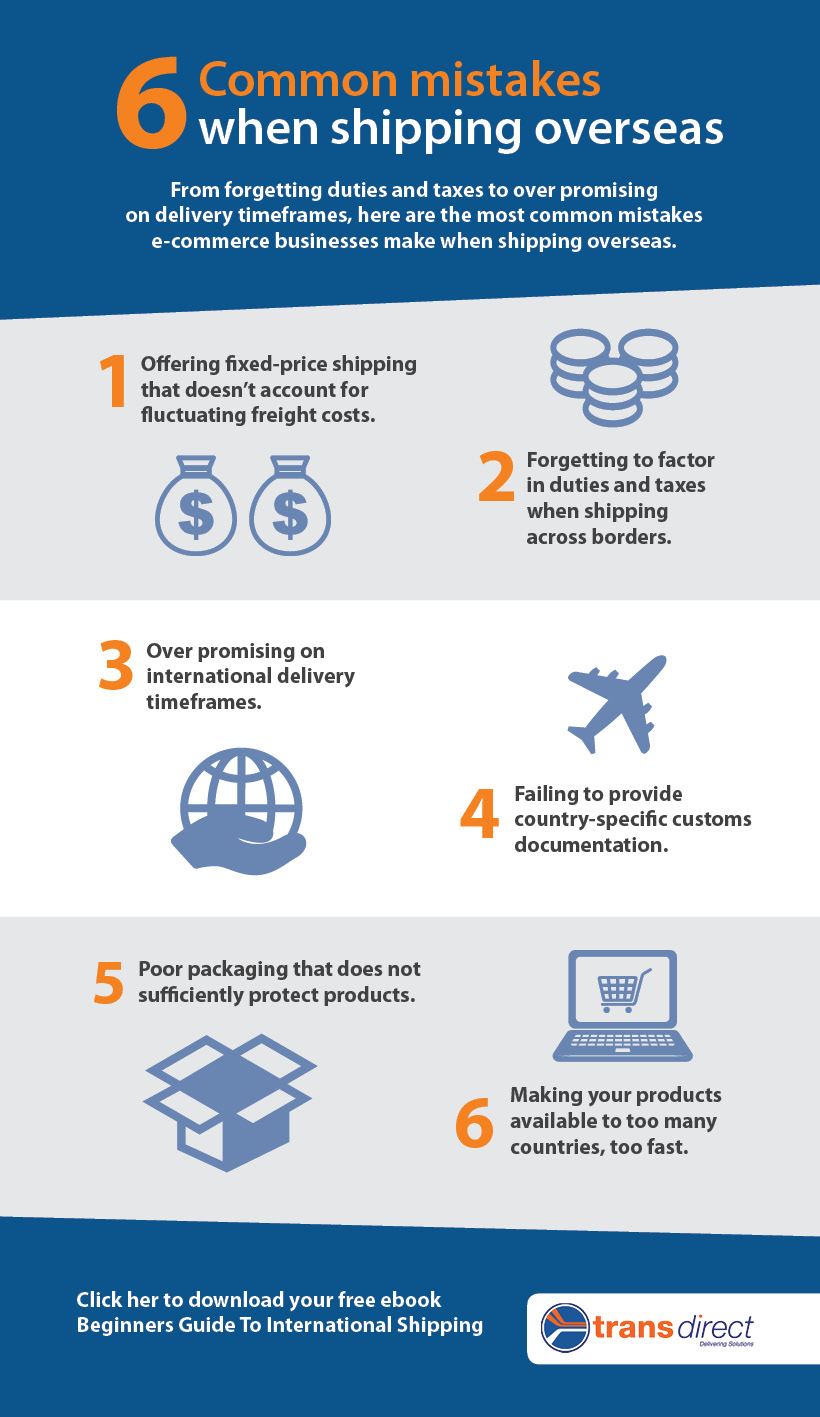
From forgetting duties and taxes to over promising on delivery timeframes, here are the most common mistakes e-commerce businesses make when shipping overseas…
Thanks to online shipping aggregators and freight companies that are rapidly evolving to ease international shipping for Australian e-commerce retailers, it’s easier than ever to grow your business into a global brand. (If you’re thinking about starting global shipping- check out our four step guide to determine whether your business should go global.
However, there are some common mistakes e-commerce retailers make when shipping overseas that threaten to derail their efforts to gain traction in new international markets.
Here are the common mistakes to watch out for and how to avoid them:

1. Offering fixed-price shipping
Giving your international customers fixed-price shipping may seem attractive, but fluctuating freight costs between countries can spell disaster for your bottom line. Instead, consider offering variable rates with a shipping aggregator built in to your shopping cart that gives your customers access to the best-value quote for their destination and delivery timeframe.
2. Forgetting duties and taxes
You’ll need to pay duties and taxes when shipping products across borders. These costs differ between countries, which can make building them into your general product pricing somewhat difficult. It’s important to do your homework here and add the appropriate costs to country-specific shipping rates to avoid being left holding the bill.
3. Over promising on delivery timeframes
To successfully manage customer expectations, it’s important to under promise and over deliver. Don’t make unrealistic claims about your international delivery timeframes, and keep in mind that delivery timeframes differ between countries so it may not be possible to offer a blanket delivery timeframe across territories.
4. Dropping the ball on documentation
Each country also has specific customs requirements for incoming products, and this comes with various documentation requirements. If you fail to provide the correct country-specific documentation, you’ll risk your shipments getting held up in customs or returned to you. This, of course, will lead to damaging customer frustrations.
5. Poor product packaging
International shipments tend to go through more sets of hands than domestic freight.
Protecting your products with appropriate packaging for longer international journeys will go a long way to reducing product returns and the associated costs.
6. Diving in the deep end
Making your products available to too many countries, too fast can be counterproductive. Instead, begin by focusing on one or two international markets and build slowly as you become more confident and gain experience managing country-specific requirements. Check out the pros and cons of international shipping before starting your international shipping strategy.
Ready to start shipping? New customers get a quote, or existing members please sign in.
